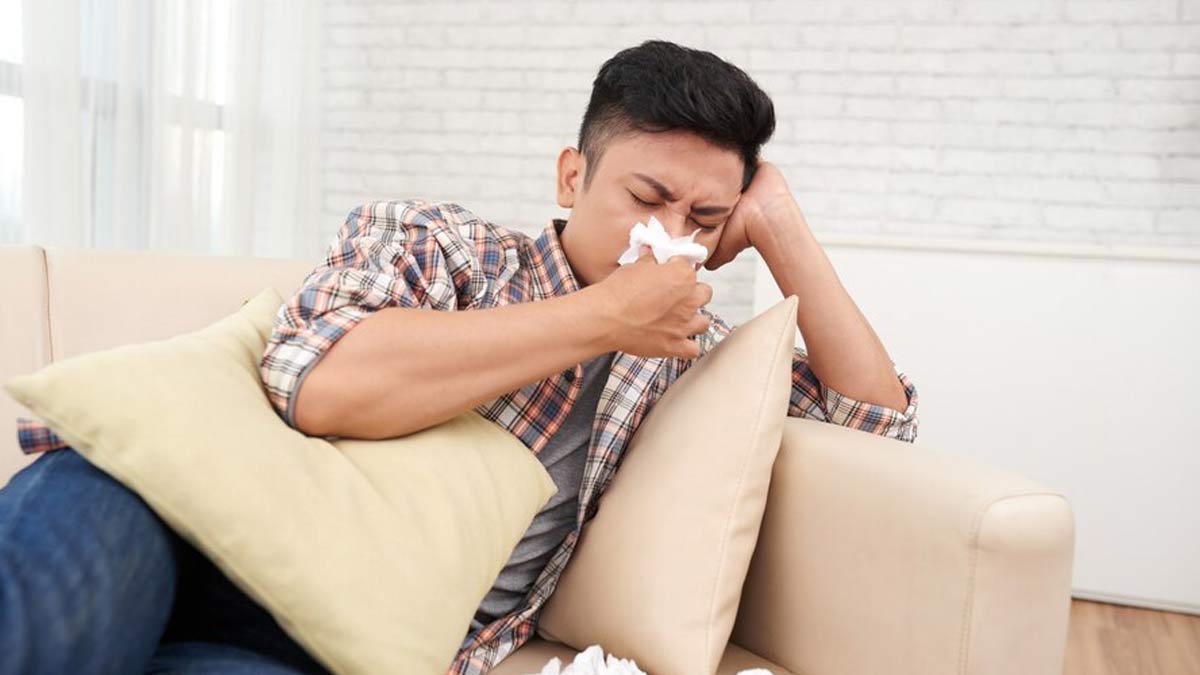
Nearly the entire global population (around 99%) breathes air containing pollutants that exceed the recommended limits set by the World Health Organization (WHO). It is important to note that pollution is not just an outdoor problem and that indoor pollutants are equally responsible for it.
Table of Content:-
Over 200 crore people are exposed to alarming levels of household air pollution, which combined with the effects of outdoor pollutants results in 70 lakh premature deaths annually, as per the WHO.
To shed light on the same, we spoke to Dr Kutty Sharada Vinod, Pulmonologist, Karuna Hospital, Delhi, who highlighted some of the most common yet hazardous indoor pollutants.
Also Read: Did You Know That Air Pollution Can Trigger Heart Attacks? Expert Answers
Paints And Other Toxic Fumes

Fumes from sources like kerosene stoves, wood stoves burning coal, volatile organic compounds, and emissions from products such as paints, chlorine, bleach, and floor cleaners are indeed common pollutants known to act as airway irritants, said Dr Vinod. Exposure to these substances can have adverse effects on respiratory health and may even worsen or precipitate asthma.
Unfortunately, about 11% of lung cancer fatalities in adults can be linked to exposure to carcinogens resulting from household air pollution. This pollution arises from the use of kerosene or solid fuels such as wood, charcoal, or coal for domestic energy requirements, according to the WHO.
Pet Dander
According to the American Lung Association (ALA), poor indoor air quality can increase one's risk of infections, lung cancer, and chronic lung diseases, such as asthma. Pet dander from pets like dogs, cats, rodents, and birds is one of the contributors to poor indoor air quality, which can trigger allergic reactions in some individuals, causing symptoms such as sneezing, itching, and respiratory issues.
Dust Mites

Another major indoor trigger for people with asthma is dust mites, which are tiny bugs found in household dust and bedding. As per the ALA, these allergens can be responsible for asthma attacks.
“A mild case may cause an occasional runny nose, watery eyes, and sneezing. In severe cases, the condition is ongoing, resulting in persistent sneezing, coughing, congestion, facial pressure, or even a severe asthma attack," the health body warns.
Also Read: Expert Talk: Impact Of Air Pollution On Lungs
Pigeon Feathers And Poop Are Health Hazards Too
Many reports in the past have linked bird droppings and feathers to diseases like histoplasmosis, a respiratory disease; candidiasis, a yeast or fungus infection; and cryptococcosis, caused by yeast found in the intestinal tract of pigeons and starlings.
Dr Vinod added, "Pigeon feathers and poop (and also that of other birds like parrots or parakeets) can cause an irreversible lung disease known as hypersensitivity pneumonitis," which is an immune system disorder that causes inflammation in your lungs.
According to Medical News Today, other bird-related diseases include salmonellosis, a form of food poisoning, and E. coli. Infection.
Prevention Tips

Some of the ways to prevent indoor air pollution include:
- Using air purifiers with High Efficiency Particulate Air (HEPA) filters
- Keeping doors and windows closed
- Staying indoors if the AQI is poor
- Vacuuming bed sheets to get rid of dust mites and pet dander
- Avoiding fumes that irritate your airways
Conclusion
As important as it is to address outdoor pollution, it is equally crucial to tackle indoor air pollution for not just your health but also for the climate. The presence of common pollutants from sources like household appliances and cleaning products necessitates awareness and proactive measures. One must implement proper ventilation, minimise the use of harmful substances, and use best-quality air purifiers. These strategies can help reduce the risk of respiratory ailments and improve the quality of life for residents.
Also watch this video
How we keep this article up to date:
We work with experts and keep a close eye on the latest in health and wellness. Whenever there is a new research or helpful information, we update our articles with accurate and useful advice.
Current Version